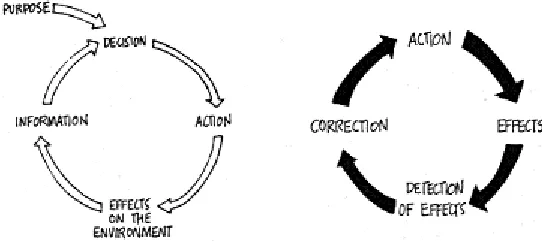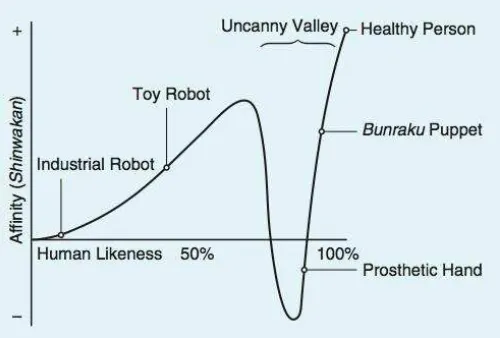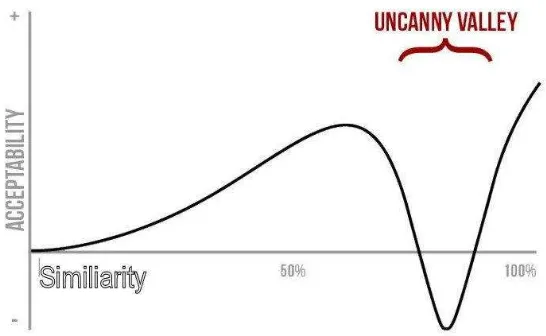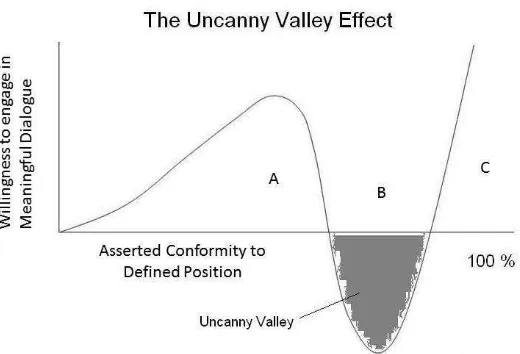What I Learned from Ranulph:
A Grateful Tribute to Ranulph Glanville
By Michael Lissack
President, American Society for Cybernetics
The first thing Ranulph Glanville taught me about cybernetics would prove in the end to be the most prophetic: namely that Winston Churchill was the first practicing cyberneticians. I suspect that most if not all of the readers of this article are already shaking their heads. What could Lissack be talking about? Ranulph told me this when describing a speech Churchill gave in the House of Lords chamber when the British Commons was discussing whether or not to rebuild the Palace of Westminster.
O the night of May 10, 1941, with one of the last bombs of the last serious raid, our
House of Commons was destroyed by the violence of the enemy, and we have now to o side hethe e should uild it up agai , a d ho , a d he …. We shape our buildings, and afterwards our buildings shape us. Having dwelt and served for more than forty years in the late Chamber, and having derived very great pleasure and advantage therefrom, I, naturally, should like to see it restored in all essentials to its old form, convenience and dignity." (Winston Churchill, 1943)
We shape our buildings, and afterwards our buildings shape us. In that one sentence were a host of pearls of cybernetic wisdom – the role of context, the role of affordances, the importance of action, ideas shaping action, actions shaping ideas, circularity, and the role of the observer. And, Churchill said it five years before Wei er’s first book. Thus, Churchill was the first practicing cybernetician (under modern usage – ignoring Ampere’s 1834 definition).
Ranulph cautioned, however, that Churchill himself would have been opposed to the label. Which was
Ra ulph’s se o d lesso to e: a of those ho are ost su essful i incorporating cybernetics into
their world view and their affordances for action are highly resistant to the label cyberneticians and often to the very topic of cybernetics. These people live cybernetics. It is a part of who they are and of what they do. They do not study the subject. They do no not write great tracts about critical ideas and alternative formulations. They do not spend time trying to sort out the vagaries of difference between systems science, complex systems, and cybernetics. They never heard of Science 1 and Science 2. And, they do not care. They live their lives. Cybernetically.
It was only fitting then that Ranulph’s fi al A“C o fere e ould e e titled Li i g i C ere ti s. To the Ranulph I knew cybernetics was about acting, thinking, and then acting again. It was about life. Paul Pangoro captured this idea in a video which I played at that 2014 conference:
mechanical physical world where things have to work. We inhabit a biological world which has to work (of course otherwise we would not survive). And a social world in which our conversations in which our conversations and interactions work as best they do. or, if they break down, cybernetics allows us to model the breakdown and to know how to improve things. I find it an incredibly powerful language… a frame for looking at the world. Once you see the world in a cybernetic way, through the cybernetic lens, all things are cybernetic. Because all systems become part of this set of languages of action and sensing and comparing and understanding and taking a meta-view. All intelligent systems have this property. of trying, acting, seeing the difference, changing, acting, seeing, sensing. This loop of acting, sensing, comparing is fundamental.
Paul’s ie is appro i atel aptured the dra i g i figure 1.
Figure 1 --The Living Cybernetic Loop
When I asked Ranulph to explain his perspective to me a five-year long seminar was begun (mostly in person, sometimes by phone, often by email). I can only summarize here what Ranulph taught me and I
do so i Ra ulph’s o words:
than denying him. That the Bla k Bo e ui es the o se e ’s p ese e is acknowledged, and is circularly connected in. The observer watches and changes. What the observer learns he learns from interaction with the Black Box (which is his construct). When what is observed is observed by an observer, that observer is responsible for the observation, the sense he makes of it, and the actions he takes based on that sense. Von Foerster gives
an Ethical Imperative: A t always so as to increase the number of hoi es. (This is joined
a a o pa i g Aestheti al I pe ati e: If ou desi e to see, lea ho to a t. The thi d is that e o st u t ou ealities. D a aDisti tio !
My major initial concern was to develop a set of concepts that might explain how, while we all observe and know differently, we behave as if we were observing the same thing. To use a metaphor: my work is the creation of games fields: others create the games to play in these fields and still others play them. Finally, some are spectators. The point of an account that admits others is not that it is right, but that it is general (and generous). Cybernetics is often considered a meta-field. The Cybernetics of Cybernetics is, thus, a
meta-meta-field. My work is, therefore, a meta-meta-meta-field. (Glanville, 2002)
In that spirit, I want to share Ra ulph’s final lesson to me with you the reader. It was after the conference and after my election to succeed Ranulph as ASC President. We were discussing stridency and the problem of communication in the face of severe disagreement. I forget which of the all too many social or political ills had turned our conversation this way. I showed Ranulph what is known as the Mori Uncanny Valley and related it to the idea of strident disagreement. The context was political and political discourse in America can be viewed as stridency in the making. As Robert Samuelson of the Washington Post put it in 2003 and 2004:
"One of today's popular myths is that we've become a more "polarized" society. We're said to be divided increasingly by politics (liberals vs. conservatives), social values (traditionalists vs. modernists), religion (fundamentalists vs. everyone else), race and ethnicity. Today's polarization exists mainly on the public stage among politicians, TV talking heads, columnists and intellectuals. What's actually happened is that our political and media elites have become polarized, and they assume that this is true for everyone else. It isn't. …. For many, stridency is a strategy. The right feeds off the left and the left feeds off the ight, …Pola izatio se es thei i te ests. P i iple a d self- promotion blend." (Samuelson, 2003)
"Polarization and nastiness are not side effects. They are the game. You feel good about
yourself because the other side is so fa ati al, isguided, o upt a d disho est. … Drab
The yelling, the stridency, and the moral clams reach all the way to the heads of our political parties - and this has been the case for generations:
I thi k the e's a e o ous a ket fo so e od ho sa s hat he thi ks…. Look, Harry Truman was campaigning in 1948, and a guy went up and said, "Give 'em hell, Harry!" And Harry Truman said, "I don't give 'em hell. I just tell the truth and the Republicans think it's hell." …. I can be overbearing to people whose ideas I don't agree with or respect." (Howard Dean, 2005)
Stridency, polarization and labeling seem to create meaning, at least for a moment, as complexity is reduced and decision-making eased. But, at what cost? The reduction of complex problems to polarized labels does not address the complexity of the underlying problem itself. Consensus is not reached because resolution is not the goal; discussants view each other as adversaries rather than seekers of truth or themselves as public servants; compromise is not valued. In today's de-facto context of political debate, objective discourse is marginalized.
Rejecting an interdependent view of human community invites a deceptive simplification of a conflict by splitting people into separate camps. This "us" versus "them" rhetoric is inherent in any revolutionary viewpoint that seeks to benefit from a class conflict or ideological confrontation. Polarized communication neatly organizes events into contrasting categories, giving the illusion of sharpness of perception, when in reality there is a refusal to gain new insights by listening to the other's viewpoint. (Arnett, 1986)
Attempts to promote "dialogue" have traditionally been conducted along one of two paths: the line promoted by the Nobel prize nominee physicist David Bohm - participants in a dialogue must attempt to put aside their partisan differences and enter into a "cooperative space" open to the generation of new ideas; or the line promoted by "political realists" -- where the goal is for each party to compromise and achieve partial victories. Neither of these approaches have been very successful. Despite the asserted "good will" with which politicians, influencers, and media types supposedly enter a "dialogue," all too often the cooperation within a space is limited to the joint agreement to enter it.
Figure 2 The Original Mori Uncanny Valley
Figure 3 Another View of the Mori Uncanny Valley
The cognitive and communication processes evoked by the Uncanny Valley are shown in Figure 4. Given the existence of two labels (categories) to describe some item/event/context and the emotional attachment of the observer to the first label, as the perceived characteristics which fall into label #2 increase in similarity the observer shifts his/her perception of that label from 1) surface similarities which only highlight differences to 2) boundary objects which give rise to explorations of metaphor to 3) emotional opposition which blocks "rational discussion" to finally a begrudging acceptance that perhaps label #2 is also a "reasonable" fit (and thus worthy of being discussed).
Figure 4: The Progression of "Acceptance" in the Mori Uncanny Valley
Greisemer, 1989) shared by two competing ideas. Boundary object proponents will claim that the representation allows for the identification of a common area between the two thoughts and that this common are becomes the basis for dialogue. An observer may well react to that claim in a manner approximating Mori's curve rather than the traditional 45-degree line. This often happens when the use of a "known label" to describe a new set of "facts" is perceived negatively or with regard to the use of a different label for a similar set of circumstances. The Mori hypothesis and the boundary object hypothesis can simultaneously be true where the perceived similarity is at or below the first Mori peak. Thereafter, the hypotheses diverge.
Figure 5: Three Regions of the Uncanny Valley
Figure 5 illustrates the three communicative and cognitive regions of our recognition of the Uncanny valley effect. In Area A (where traditional assertions of more information and increased similarity produce higher acceptance) ambiguity reigns -- the particularities of meaning are not yet distinct. Only by creating and re-affirming such distinctions do patterns coalesce into defined concepts. The act of drawing these distinctions draws us from Area A to Area B – into the Valley. The definitions and measures we use in Area B (the Valley) are a means of control, and we have both an emotional attachment and reaction to control. By asserting abstract rules, values, etc. we can "fence off" potential conceptual slippages. Mechanically, then, the key to moving from incommensurable stridency (the Valley) to meaningful dialogue is to move the discussion away from the articulated rules and values of Area B - either to the anecdotal evidence of Area A, or the exemplar presentations of Area C.
and ultimately to interfere with effectiveness. What is critical is that the interpretive and retelling efforts NOT stop when the representation gets assigned. To stop at this point is to ignore dialogue and revert to the ascribed coherence and retrospective judgments of identity where the label is the explanation. Such is Area B.
Under the boundary object hypothesis more information and greater similarity will lead to greater acceptance (the 45-degree angle). The boundary object hypothesis and the Uncanny Valley effect will mirror each other in what is shown as Area A. They will diverge greatly in Area B and then re-converge in Area C. If the Uncanny Valley hypothesis holds for a given representation, then once Area B is reached then three primary possibilities emerge:
1. More information is provided by each of the two competing ideas in support of their own respective positions – incommensurability will ultimately be asserted due to the lack of common dialogue. 2. The two positions are abstracted back to a level of greater generality (i.e. less information is asserted and greater abstractions replace the missing information) – this has the opportunity of moving the dialogue to the left – and back into Area A where boundary objects can be found.
3. Enabling constraints are asserted which restrict the context and applicability of the representation ceteris paribas. By restricting the context, the dialogue can be moved to Area C.
It was Ranulph’s inspiration that allowed me to see the possibility of movements described by numbers 2 and 3 above. I regard these as the cybernetic approach to escaping stridency.
I close with a quote from Ernst von Glasserfeld (2010):
Cybernetics is the art of creating equilibrium in a world of possibilities and constraints. This is not just a romantic description; it portrays the new way of thinking quite accurately. Cybernetics differs from the traditional scientific procedure, because it does not try to explain phenomena by searching for their causes, but rather by specifying the constraints that determine the direction of their development.
Ranulph helped me to better see constraints and in doing so helped open my world to many new possibilities. I shall be forever grateful.
References
Arnett, R. (1986). Communication and Community: Implications of Martin Buber's Dialogue, Carbondale, IL : SIU Press
Dean, H. (2005). Interview on "Meet the Press", May 22
Glanville, R. (2002) “e o d Order C er eti s in Systems Science And Cybernetics – Vol. III -
Incommensurability, Doubt, and a Lack of Explication , Foundations of Science (forthcoming) Lissack, M. (2015b) Restoring Dialogue to Political Debate: A Buberian Approach (forthcoming) Mori, M. (1970) "The Uncanny Valley", Energy, 7(4), pp. 33-35
Samuelson, R. (2003). "The Myth Of A Polarized America", Newsweek, December 4 Samuelson, R. (2004). "How Polarization Sells", The Washington Post, June 30, p.A21
Star, S. and Griesemer, J. (1989) "Institutional Ecology, 'Translations' and Boundary Objects: Amateurs and Professionals in Berkeley's Museum of Vertebrate Zoology, 1907-39", Social Studies
of Science, Vol. 19, No. 3 (August), pp. 387-420



